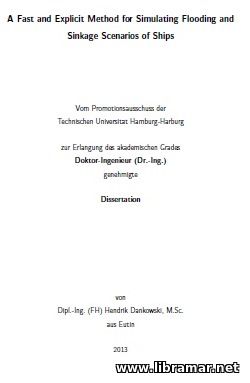
The kite propulsion has already emerged as one of the promising and attractive ways of harnessing the power of the wind to yield the financial and also environmental benefits. In order to better facilitate both design and optimization of the propulsion systems of this type, people have to possess a thorough understanding of the dynamics affecting the kite motion and all resulting forces.
The present thesis contains the results obtained from two line tension models and those results have been compared with the time histories for the flights collected during the experiments. Some new methodologies for the investigation of kite performance have been established. The first model is the "zero mass model" assuming that both kite and lines have no weight, while the second model - "lumped mass model" considers the mass of the kite and therefore makes use of the motion equation.
It has been determined that both models converge to same results in the limit where the mass of the kite is tending to zero. The publication covers such important topics related to the kite propulsion as experimental methods to record the trajectories of the flights, comparison of the models mentioned above, determination of the kite forces using 3D flight trajectories, fuel saving issues etc.





